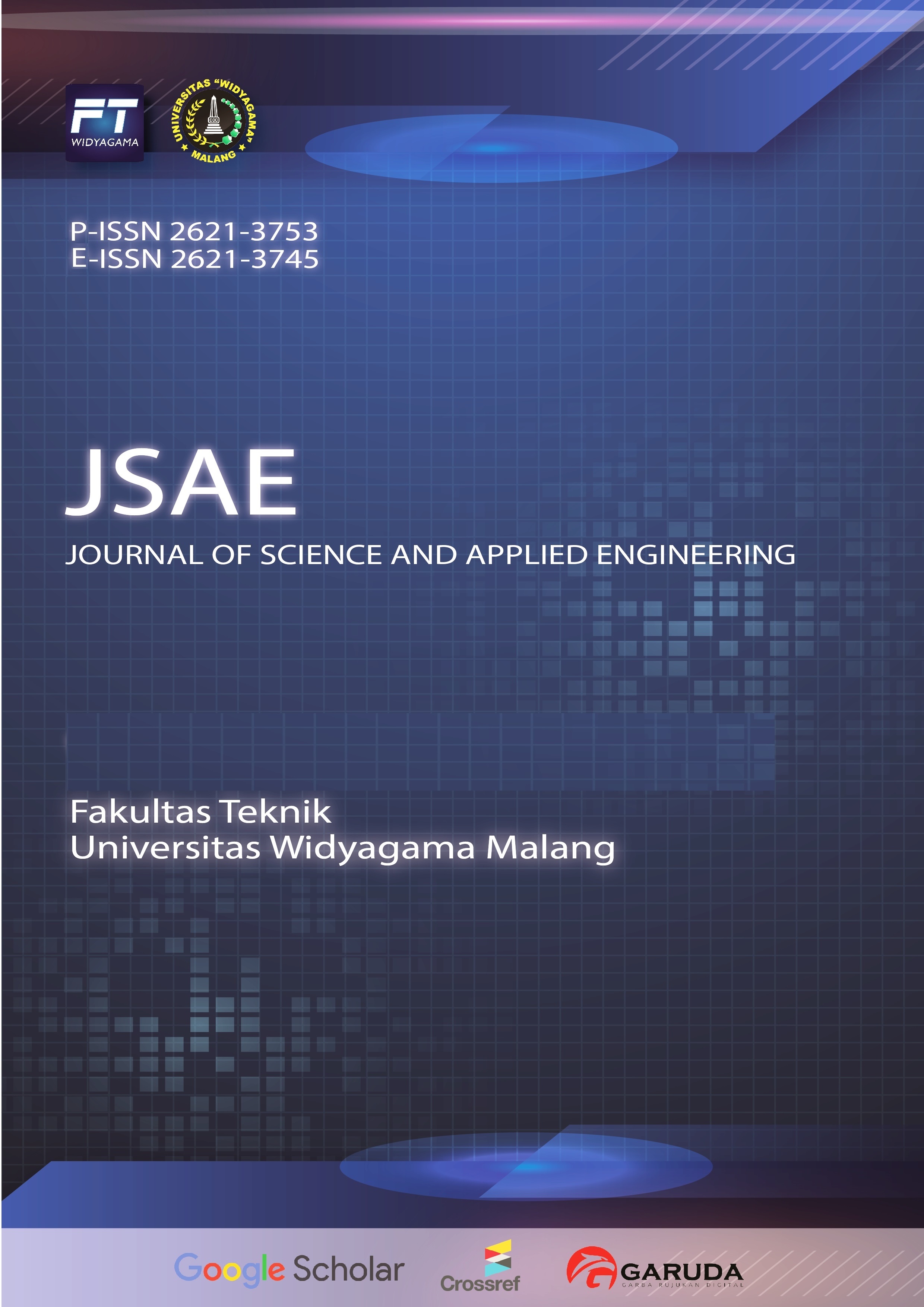The Role of Additional Ceramic Waste on Expansive Clay Stability
DOI:
https://doi.org/10.31328/jsae.v5i1.3580Keywords:
Ceramic waste, expansive clay, physical properties, mechanical properties, 3D swelling.Abstract
One of the construction problems is often due to poor technical properties of the soil, unstable soil, and poor soil bearing capacity is one of the causes of high shrinkage expansion. The purpose of this study was the use of ceramic waste as a stabilizing agent for expansive clay. Expansive clay samples were taken in undisturbed and disturbed conditions. Variations in addition of ceramic waste to clay are 0%, 5%, 10%, 15% and 20%. Physical properties were tested (moisture content, specific gravity, atterbeg and proctor limits) mechanical properties (free swelling). The results showed that the ceramic handicraft industry waste as a soil stabilizing agent showed that the results of the physical properties decreased in water content and specific gravity was quite consistent. In addition, the stress value increases after mixing ceramic waste are related to mechanical properties, and the longer the incubation day, the higher the swelling volume and the highest swelling volume in a mixture of 5% ceramic waste.References
V. Kumar, P. Praveen, S. Tomar, and D. Jaishwal, “A- Review ‘ Stabilization of Expansive Soil Using Fly Ash and Iron Powder ,’†vol. 5, no. 1, pp. 1–7, 2019.
M. A. Sani, A. U. Chinade, A. Mamuda, A. Batari, and M. D. Abdullahi, “Effect of Gypsum in Proportion of Other Additives Used in Stabilizion of Deficient Soils: A Review,†vol. 6, no. 6, pp. 161–176, 2021, doi: 10.11648/j.jccee.20210606.11.
T. M. Petry and J. C. Armstrong, “Stabilization of expansive clay soils,†Transp. Res. Rec., no. 1219, pp. 103–112, 1989.
“Stabilization of Expansive Soil Using,†2019.
G. Landlin, B. Sharmila, and S. Bhuvaneshwari, “Comparative Evaluation of Lime and Biopolymer Amended Expansive Soil,†Lect. Notes Civ. Eng., vol. 164, no. January, pp. 807–821, 2022, doi: 10.1007/978-3-030-77230-7_62.
A. A. Fondjo, E. Theron, and R. P. Ray, “Stabilization of Expansive Soils Using Mechanical and Chemical Methods: A Comprehensive Review,†Civ. Eng. Archit., vol. 9, no. 5, pp. 1289–1294, 2021, doi: 10.13189/cea.2021.090503.
A. A. Al-Rawas and M. F. A. Goosen, “Expansive Soils: Recent advances in characterization and treatment,†Taylor Fr. e-Library, vol. 53, no. 9, pp. 1689–1699, 2006.
M. Olgun, “The effects and optimization of additives for expansive clays under freeze-thaw conditions,†Cold Reg. Sci. Technol., vol. 93, pp. 36–46, 2013, doi: 10.1016/j.coldregions.2013.06.001.
A. Mahamedi and M. Khemissa, “Stabilization of an expansive overconsolidated clay using hydraulic binders,†HBRC J., vol. 11, no. 1, pp. 82–90, 2015, doi: 10.1016/j.hbrcj.2014.03.001.
G. P. Makusa, “Soil Stabilization Methods and Materials in Engineering Practice,†J0urnal, vol. 1, pp. 1–35, 2012.
M. Anaokar and S. Mhaiskar, “Evaluation of Swelling Control Parameters for Stabilized Expansive Soil Buffer Layers under Pavement Embankment,†Int. J. Eng. Appl. Sci., vol. 5, no. 1, pp. 79–85, 2018, doi: 10.31873/ijeas.5.1.33.
M. Malhotra and S. Naval, “Stabilization of Expansive Soils Using Low Cost Materials,†Int. J. Eng. Innov. Technol., vol. 2, no. 11, pp. 181–184, 2013.
. S. S. G. P., “Stabilization of Pavement Subgrade By Using Fly Ash Reinforced With Geotextile,†Int. J. Res. Eng. Technol., vol. 03, no. 08, pp. 255–259, 2014, doi: 10.15623/ijret.2014.0308040.
K. Divya Krishnan and P. T. Ravichandran, “Investigation on Industrial Waste Material for Stabilizing the Expansive Soil,†IOP Conf. Ser. Mater. Sci. Eng., vol. 912, no. 6, 2020, doi: 10.1088/1757-899X/912/6/062062.
M. R. Hakro et al., “Compaction Characteristics and Permeability of Expansive Shale Stabilized with Locally Produced Waste Materials,†pp. 1–15, 2022.
R. B. Kassa, T. Workie, A. Abdela, M. Fekade, M. Saleh, and Y. Dejene, “Soil Stabilization Using Waste Plastic Materials,†Open J. Civ. Eng., vol. 10, no. 01, pp. 55–68, 2020, doi: 10.4236/ojce.2020.101006.




